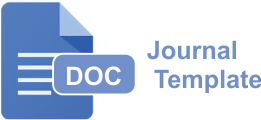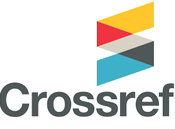The Effect of Contextual Learning Models Assisted by Wordwall Media on Students' Mathematical Concept Comprehension Ability in Elementary Schools
-
Abstract
This study aims to evaluate the effectiveness of a contextual learning model assisted by Wordwall media in enhancing elementary school students' mathematical concept comprehension. The research used a quantitative approach with an experimental design for a pretest-posttest control group. The sample consisted of two groups: an experimental group taught using the contextual learning model assisted by Wordwall and a control group that followed conventional teaching methods. The instruments used included tests for validity, reliability, difficulty level, and discrimination power. The results showed that the learning process supported by Wordwall was highly effective, significantly increasing students' active engagement in the learning process. Statistical analysis revealed significant differences between the experimental and control groups, with a large effect size, indicating that the contextual learning model assisted by Wordwall significantly improved students' mathematical concept comprehension. Additionally, this approach successfully enhanced students' learning motivation and fostered a more meaningful and relevant learning environment in alignment with the needs of the digital era. The study concludes that applying technology-based contextual learning models such as Wordwall can create a more interactive, relevant, and meaningful learning experience, effectively improving students' learning outcomes. This model is also appropriate for supporting the development of 21st-century skills, such as critical and creative thinking, in today's digital age.
References
T. Solfitri, H. M. Siregar, Kartini, and A. Permata, “Facilitating Mathematical Creative Thinking Ability: Analysis of Validation, Practicality, and Effectiveness of Learning Modules,” J. Pendidik. Progresif, vol. 14, no. 1, pp. 619–634, 2024, doi: 10.23960/jpp.v14.i1.202445.
H. M. Siregar, Nurjanah, and R. Nuraeni, “Development and Integration of GeoGebra Applets in Mathematics Learning,” Pedago. J. Ilm. Pendidik., vol. 8, no. 1, pp. 33–46, 2024, doi: 10.55215/pedagonal.v8i1.9362.
M. P. Ariyanto, Z. R. Nurcahyandi, and S. A. Diva, “Penggunaan Gamifikasi Wordwall untuk Meningkatkan Hasil Belajar Matematika Siswa,” Mathema J. Pendidik. Mat., vol. 5, no. 1, pp. 1–10, 2023, doi: https://doi.org/10.33365/jm.v5i1.2080.
Asmiati, M. R. Kasman, and F. Amaliah, “Penerapan Media WordWall untuk Meningkatkan Hasil Belajar Siswa Mata Pelajaran Matematika kelas V SD,” J. Pendidik. Dasar dan Kegur., vol. 9, no. q, pp. 28–33, 2024, doi: https://doi.org/10.47435/jpdk.v9i02.3174.
L. Ferlina and N. J. Fratiwi, “Edugame Wordwall: Sebuah Media untuk Meningkatkan Minat Belajar Matematika Siswa Sekolah Dasar,” Walada J. Prim. Educ., vol. 3, no. 2, pp. 73–88, 2024, doi: https://doi.org/10.61798/wjpe.v3i2.126.
T. Solfitri, H. M. Siregar, Syofni, R. D. Anggraini, and I. Apristi, “Development of Rational Function Integral E-Worksheet with Linear Factor Denominators to Improve Mathematical Creative Thinking Ability,” J. Educ. Res. Eval., vol. 7, no. 1, pp. 70–79, 2023, doi: 10.23887/jere.v7i1.54238.
L. Eriska, M. M. Ulfa, and Syarifuddin, “Pemanfaatan Wordwall dalam Pembelajaran Matematika untuk Menumbuhkan Motivasi Belajar Peserta Didik Kelas I di SD Negeri 112 Palembang,” Didakt. J. Ilm. PGSD FKIP Univ. Mandiri, vol. 10, no. 2, pp. 1286–1293, 2024, doi: https://doi.org/10.36989/didaktik.v10i2.2880.
N. Wafiqni and F. M. Putri, “Efektivitas Penggunaan Aplikasi Wordwall dalam Pembelajaran Daring (Online) Matematika pada Materi Bilangan Cacah Kelas 1 di MIN 2 Kota Tangerang Selatan,” Elem. J. Pendidik. Dasar, vol. 1, no. 1, pp. 68–83, 2021, doi: 10.15408/elementar.v1i1.20375.
K. Maghfiroh, “Penggunaan Media Word Wall untuk Meningkatkan Hasil Belajar Matematika Pada Siswa Kelas IV MI Roudlotul Huda,” J. Profesi Kegur., vol. 4, no. 1, pp. 64–70, 2018.
Sugiyono, Metode Penelitian Kuantitatif, Kualitatif, dan R&D. Bandung, Indonesia: Alfabeta, 2021.
S. Nurulhuda, Mariyam, and D. A. Marhayani, “Penerapan Model Pembelajaran TGT Berbantuan Wordwall terhadap Kemampuan Pemahaman Konsep Matematika Siswa,” JKPM (Jurnal Kaji. Pendidik. Mat., vol. 10, no. 1, pp. 37–46, 2024, doi: 10.30998/jkpm.v10i1.24937.
A. Ma’rifah, C. Alfi, and M. Fatih, “Pengaruh Pembelajaran PBl Berbasis Wordwall terhadap Peningkatan Kemampuan Numerasi Siswa Kelas III,” AKSIOMA J. Mat. dan Pendidik. Mat., vol. 15, no. 2, pp. 174–189, 2024, doi: https://doi.org/10.26877/aks.v15i2.19421.
I. Rafianti, Trigunadi, N. G. Kamila, R. Nurafifah, N. Fajari, and R. A. Syauqi, “Pengaruh Media Pembelajaran Wordwall terhadap Hasil Belajar Matematika Siswa SMA,” Wilan. J. Inov. dan Ris. Pendidik. Mat., vol. 5, no. 4, pp. 290–295, 2024, doi: 10.56704/jirpm.v5i4.22449.
A. Hidayaty, M. Qurbaniah, and A. E. Setiadi, “The Influence of Word Wall on Students’ Interest and Learning Outcomes,” J. Penelit. Ilmu Pendidik., vol. 15, no. 2, pp. 211–223, 2022, doi: https://doi.org/10.21831/jpipfip.v15i2.51691.
C. F. Kholik and I. Muthi, “Penggunaan Media Pembelajaran Wordwall Terhadap Peningkatan Minat Belajar Matematika Siswa Sekolah Dasar,” J. Ilm. Multidisiplin, vol. 2, no. 7, pp. 276–281, 2024.
E. Melasevix, H. A. Asnawi, J. J. N. Alami, I. H. Masynuah, R. A. N. Putra, and D. Darmadi, “Penerapan Pembelajaran Kontekstual dalam Meningkatkan Kemampuan Pemecahan Masalah Matematika di MTs Ma’arif Bandar,” J. Pendidik. dan Konseling, vol. 3, no. 2, pp. 117–121, 2021, doi: 10.31004/jpdk.v3i2.1828.
P. B. Pradnyana, “Meningkatkan Hasil Belajar Matematika dengan Penerapan CTL (Contextual Teaching and Learning) Terhadap Siswa Kelas IV SD No 8 Sangsit,” Wahana Chitta J. Pendidik., vol. 1, no. 1, pp. 80–87, 2018.
A. Syapaah, Fatikhah, M. Maula, S. Robiyah, and Rasilah, “Model Pembelajaran Kontekstual pada Pelajaran Matematika di Sekolah Dasar,” J. Lingk. Pembelajaran Inov., vol. 5, no. 7, pp. 73–79, 2024.
Copyright (c) 2024 Journal of Research on Mathematics Instruction (JRMI)

This work is licensed under a Creative Commons Attribution-NonCommercial-ShareAlike 4.0 International License.






